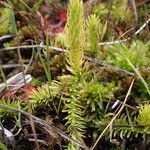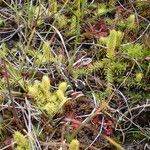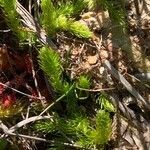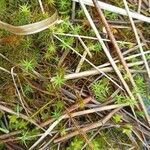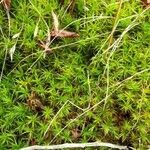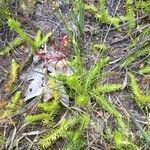Plants of marshes and wetlands. Aerial shoots creeping, 5-20 cm, simple or multiple times dichotomous, 1-2 mm in diam., stem together with leaves 5-8 mm wide. Leaves spirally arranged, sparser on creeping side of stem, dense, ascending, yellowish green, not lustrous, lanceolate to linear, bent, 4-7 × 0.5-1.1 mm, papery, both surfaces glabrous, midrib indistinct, base not narrowed, decurrent, sessile, margin entire, apex acuminate. Peduncles solitary, erect, 3-8 cm tall, together with bracts 4-10 mm wide; bracts dense, linear or linear-lanceolate; strobilus yellowish green, terete, 1-5 cm × 5-7 mm; sporophylls dimorphic, yellowish green, linear-lanceolate and lanceolate, imbricate, 2-5 × 0.5-1.2 mm, papery, margin entire, apex acuminate or blunt. Sporangia enclosed or slightly exposed, subspherical, ca. 0.5 mm in diam., apex acuminate.
More
Horizontal stems flat on ground, 3--12 X 0.5--0.9 cm; stems (excluding leaves) slender, 0.5--0.9 mm diam.; leaves monomorphic, spreading, upcurved, 5--6 X 0.5--0.7 mm, margins entire. Peduncles 1(--2) per plant, 3.5--6 X 0.4--0.7 cm; strobilus length 1/2--1/3 total height; leaves spreading, 5--6 X 0.5--0.8 mm, margins rarely toothed. Strobili 10--20 X 2.5--5.5 mm. Sporophylls spreading to spreading-ascending, 4.5--5 X 0.5--0.9 mm, margins rarely toothed. 2 n = 156.
